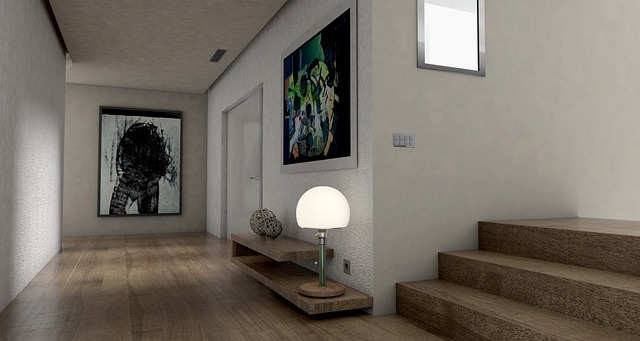Site plans and detailed landscape drafts, integrated with building permit drawings, are vital for successful construction and development. These tools provide precise visual representations, including structural elements, environmental factors, and aesthetic considerations, ensuring clear communication and alignment among stakeholders. Building permit drawings, mandated by local authorities, offer critical information for legal compliance, material specifications, and strategic placement, enhancing design feasibility and streamlining approval processes. Comprehensive mapping facilitates better decision-making, identifies potential issues early, promotes collaboration, and ultimately contributes to successful project outcomes.
“Unleash the power of visualization with site plans and landscape drafting—essential tools in comprehensive project planning. This article guides you through the art and science of creating detailed blueprints, from understanding fundamental elements in site plans to advanced landscape drafting techniques.
We explore how these tools facilitate informed decision-making by integrating building permit drawings seamlessly. Discover how comprehensive maps enhance design communication, ensuring every stakeholder understands the project’s scope and potential.”
Understanding Site Plans: Basic Elements and Purpose
Site plans are an integral part of any construction or development project, serving as a detailed visual representation of the proposed site layout. These precise drawings, often accompanied by building permit drawings, offer a comprehensive view of the project’s scope and potential impact on the surrounding environment.
The basic elements of a site plan include property boundaries, existing structures, proposed buildings, open spaces, roads, utilities, and landscaping features. Each element is carefully labeled and annotated to provide critical information about dimensions, alignments, and specifications. The primary purpose of a site plan is to facilitate clear communication between developers, architects, engineers, and local authorities, ensuring everyone involved understands the project’s vision and requirements.
Landscape Drafting Techniques for Detailed Visualization
Creating detailed and precise landscape drafting techniques is essential for comprehensive project visualization, ensuring clients and stakeholders have a clear understanding of the final outcome. This process involves translating architectural designs into vibrant, three-dimensional landscapes that capture every element, from topography to planting schemes. With advanced software tools, drafter can now bring these visions to life, enabling them to navigate complex site layouts and plan for sustainable, harmonious spaces.
One key aspect is integrating building permit drawings into the landscape drafting process. By aligning architectural blueprints with specific land contours and topographical features, drafters can accurately represent how structures interact with their surroundings. This meticulous attention to detail ensures compliance with local regulations while showcasing the project’s aesthetic potential, facilitating smoother approval processes and fostering client confidence in the design’s feasibility.
Integrating Building Permit Drawings into Project Planning
Integrating building permit drawings into project planning is a pivotal step in ensuring comprehensive visualization and success for any construction or development endeavor. These detailed technical drawings, mandated by local authorities, provide critical information about structural elements, safety measures, and compliance with zoning regulations. By seamlessly incorporating them into the site plan and landscape drafting process, architects, engineers, and developers gain a holistic understanding of the project’s physical realization.
Building permit drawings serve as a roadmap, guiding designers to create an accurate and legally sound blueprint. They facilitate precise measurements, material specifications, and strategic placement of buildings, infrastructure, and landscapes within the designated site boundaries. This integration ensures that the final design not only adheres to legal requirements but also maximizes functionality, aesthetics, and overall project value, ultimately leading to a smoother construction process and a more satisfying outcome for all stakeholders involved.
Enhancing Design Communication through Comprehensive Maps
Comprehensive maps play a pivotal role in enhancing design communication for any construction project. These detailed visual tools serve as a unified language between architects, engineers, contractors, and clients, ensuring everyone involved understands the project’s scope and intent. By integrating building permit drawings with site plans and landscape drafts, designers can convey complex ideas with clarity. This multi-faceted approach not only streamlines the approval process but also facilitates better decision-making during the implementation phase.
Through precise mapping, potential challenges and opportunities are highlighted, allowing for proactive problem-solving. Comprehensive maps provide a holistic view of the project, enabling stakeholders to appreciate the interplay between structural elements, environmental factors, and aesthetic considerations. This level of detail fosters collaboration, reduces misinterpretations, and ultimately contributes to successful project outcomes.
Site plans and landscape drafting are indispensable tools in comprehensive project visualization, ensuring clear communication and successful implementation. By understanding the basic elements of site plans and employing advanced landscape drafting techniques, professionals can create detailed and accurate representations. Integrating building permit drawings into project planning further streamlines processes, enhancing overall design efficiency. These practices not only facilitate better decision-making but also contribute to the creation of vibrant, functional spaces that meet regulatory requirements.
